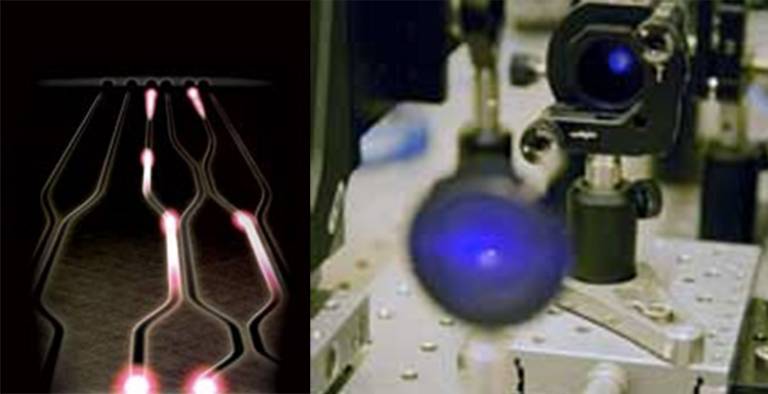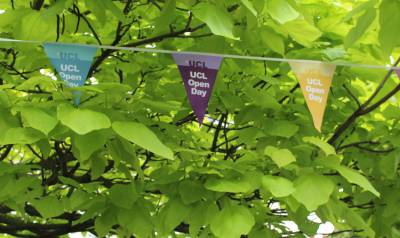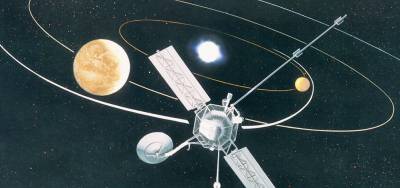A new blueprint for quantum computing with photons
9 July 2015

Quantum computers promise a step change in computational power for some important problems, such as the simulation of the properties of solid materials and chemical reactions.
At a fundamental level, all physical systems behave quantum mechanically, but the quantum mechanical properties needed for quantum computation are extremely fragile. The best way to build a large-scale quantum computer remains an important open research question.
The particle nature of light, embodied in the photon, was the first quantum effect to be discovered. Photons make excellent carriers of quantum information and can form the basis of a quantum computer. But realising this is very difficult and many challenges remain. Great advances have been made in recent years in wave-guide technology, which allows photons to be manipulated and combined in complicated ways inside a silicon chip. While wave-guides allow complicated photonic architectures to be realised, they perform best in a static configuration, and in particular active rerouting of photons is very challenging. Also while photons suffer less from quantum decoherence, a major source of noise in many realisations of quantum computing, they are strongly susceptible to photon loss errors.
In research published recently in the journal Physical Review Letters, Dr Dan Browne, from the Department of Physics and Astronomy at UCL, his joint PhD student, Mercedes Gimeno Segovia, and colleagues at Imperial College London, proposed an architecture for quantum computing with photons which overcomes several of these problems. Exploiting a phenomenon of statistical graph theory known as percolation, and exploiting state-of-the-art photon measurement techniques, their architecture reduces the active rerouting significantly and is also naturally robust to photon loss errors. It therefore forms the most promising blueprint yet for a photonic quantum computer.
There remains many challenges to overcome before a large scale photonic quantum computer can be built. Ms Gimeno-Segovia, Dr Browne and colleagues are collaborating closely with the experimental group of Prof Jeremy O'Brien, at the Centre for Quantum Photonics at the University of Bristol, to refine the model and bring it towards experimental realisation.
Images
Left:Illustration of a silica on silicon wave-guide quantum circuit (A. Politi, et al, Science, 320 no. 5876 pp. 646-649 (2008)
Right: Generating and detecting single photons
Credit: Carmel King (www.carmelking.com), © All rights reserved
 Close
Close




